In today’s digital landscape, artificial intelligence has transcended its traditional role in data processing to become a creative partner in art generation. Let’s explore this fascinating intersection of technology and creativity through our case study of a hypothetical AI art generation system.
Introduction to AI-Generated Art
AI-generated artwork represents one of the most exciting frontiers in creative technology. Unlike traditional digital art tools that simply execute an artist’s commands, AI art systems can generate original compositions based on textual prompts, existing images, or learned artistic styles.
🔍 Call to Action: Have you ever wondered how computers create art? Take a moment to examine any digital artwork you’ve recently encountered and consider whether it might have been created with AI assistance.
Understanding Text-to-Image AI Systems
At the heart of modern AI art generation are sophisticated systems that transform written descriptions into visual creations. Our hypothetical implementation in the creative arts exemplifies this approach, using complex neural networks trained on vast datasets of images paired with textual descriptions. This training enables the system to understand natural language inputs and translate them into corresponding visual elements.
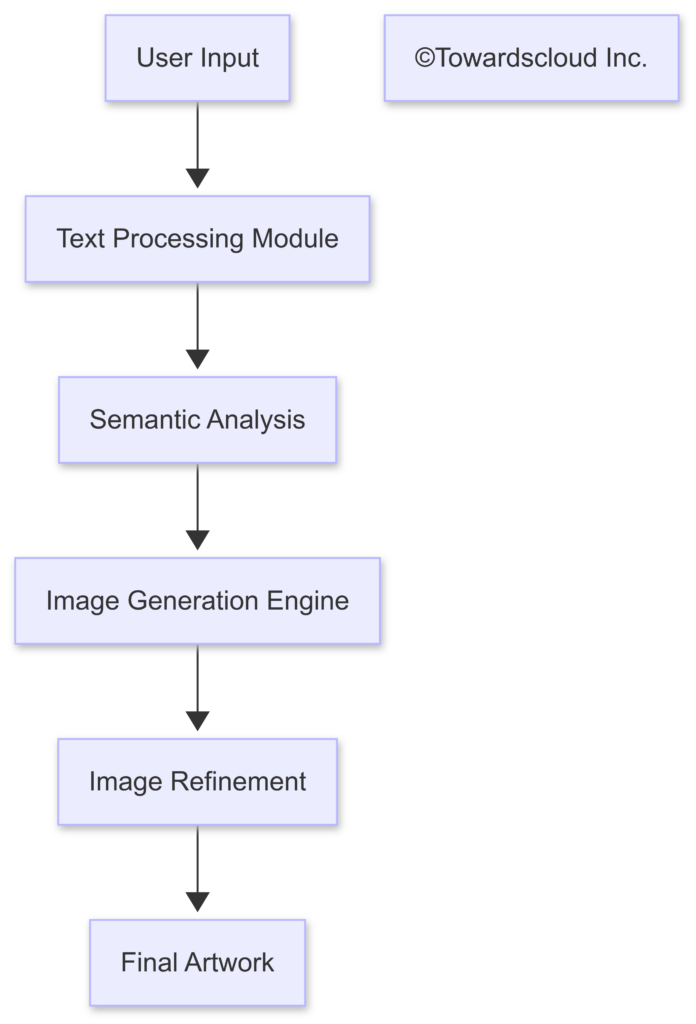
Core Technologies Behind AI Art Generation
The magic behind creative AI art systems comes from the integration of several AI disciplines:
- Natural Language Processing (NLP): Interprets user prompts and extracts key concepts, styles, and compositional elements
- Computer Vision: Analyzes visual patterns from trained datasets
- Generative Adversarial Networks (GANs): Creates the actual imagery based on interpreted prompts
- Diffusion Models: Refines the artwork through iterative enhancement
💡 Call to Action: Think about how you would describe your favorite painting to someone who’s never seen it. This exercise highlights the challenge AI faces in converting text to images!
The CLIP Model: Bridging Text and Images
The CLIP (Contrastive Language-Image Pre-training) model plays a crucial role in modern AI art generation systems. Developed by OpenAI, CLIP represents a breakthrough in connecting textual descriptions with visual content.
What is CLIP?
CLIP is a neural network trained on a massive dataset of 400 million image-text pairs collected from the internet. Unlike previous models that were specialized for specific tasks, CLIP learns to understand both images and text in a unified way.
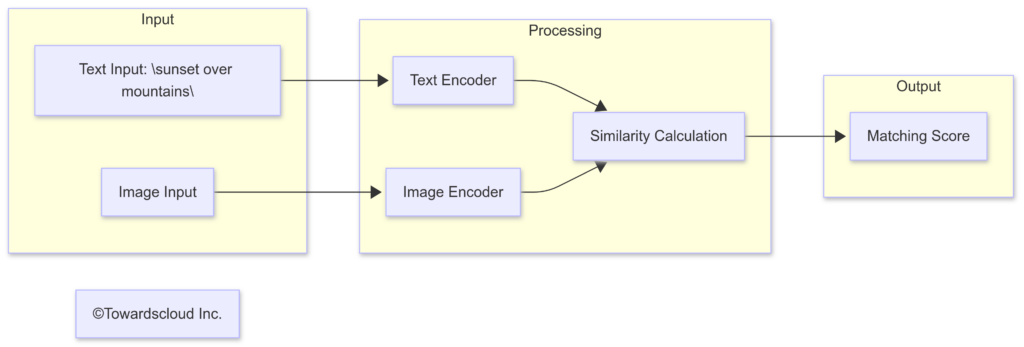
Why is CLIP Important in Image Generation?
CLIP serves as a critical “bridge” between language and imagery in AI art systems. Here’s why it’s so important:
- Translation Between Domains: CLIP helps the computer “understand” what users mean when they describe an image in words.
- Guided Generation: During the image creation process, CLIP guides other AI models (like diffusion models) by evaluating how well their outputs match the original text description.
- Quality Evaluation: CLIP can assess generated images and determine if they truly represent what was requested in the text prompt.
Real-World Example: Creating a “Cozy Coffee Shop at Sunset”
Imagine you want to generate an image of a “cozy coffee shop at sunset with people reading books.” Here’s how CLIP helps in the process:
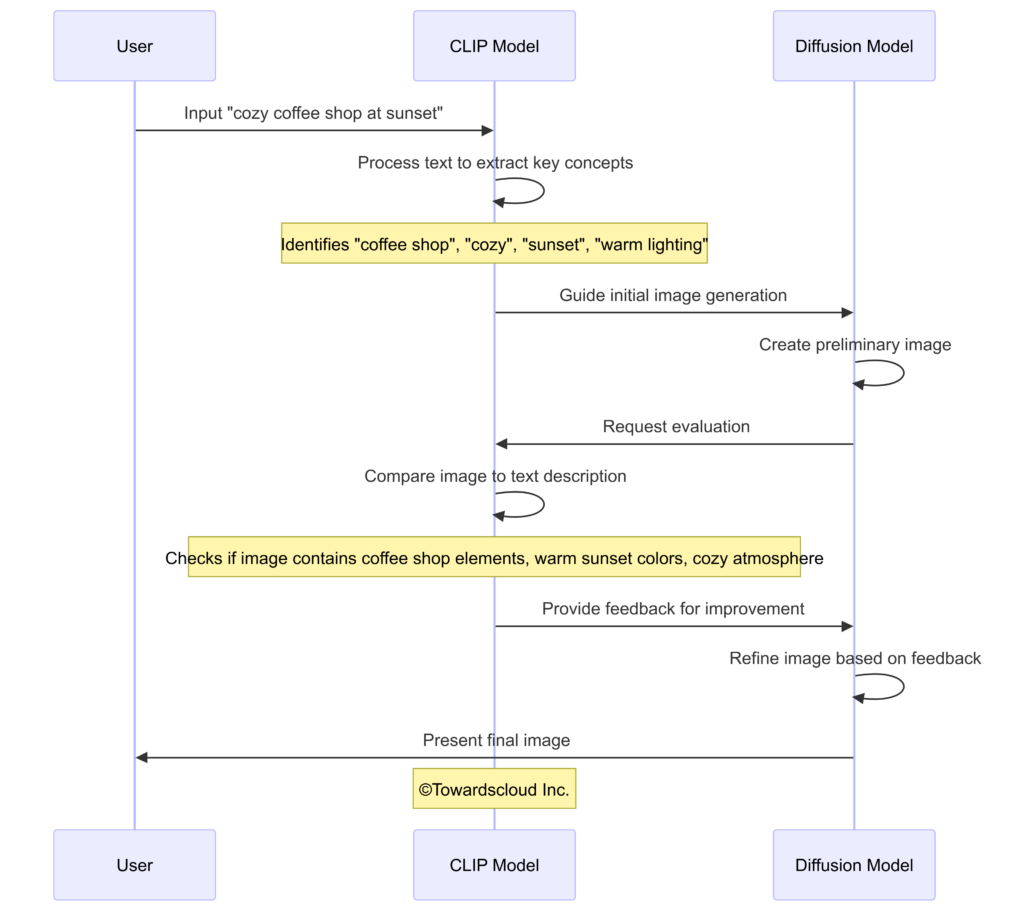
CLIP in Everyday Terms
Think of CLIP as a bilingual translator who speaks both “image language” and “human language” fluently. When you describe what you want, this translator helps convert your words into visual concepts that other AI components can understand.
For example:
- When you say “beach at sunset,” CLIP knows this should include sand, water, orange/red sky, and possibly silhouettes
- When you specify “in the style of Van Gogh,” CLIP understands the characteristic swirling brushstrokes, vibrant colors, and emotional intensity that define this artist’s work
🎨 Call to Action: Try to think of a complex scene and break it down into visual elements that a computer would need to understand. For instance, “a medieval castle in winter” includes stone towers, snow, perhaps a moat, flags, and a certain architectural style. This is similar to how CLIP processes your descriptions!
Practical Applications of CLIP-Powered Art
The CLIP model’s capabilities extend beyond just creating pretty pictures:
- Rapid Prototyping: Product designers can quickly generate visual concepts based on written specifications
- Personalized Content: Marketing teams can create custom visuals tailored to specific audience descriptions
- Educational Visualization: Converting complex scientific concepts into visual representations for better understanding
- Accessibility: Helping visually impaired individuals “see” descriptions by generating corresponding images
Technical Architecture
Let’s dive deeper into the architectural components that power a hypothetical AI art generation system (Let’s call it Word Up! bot 🙂 ):
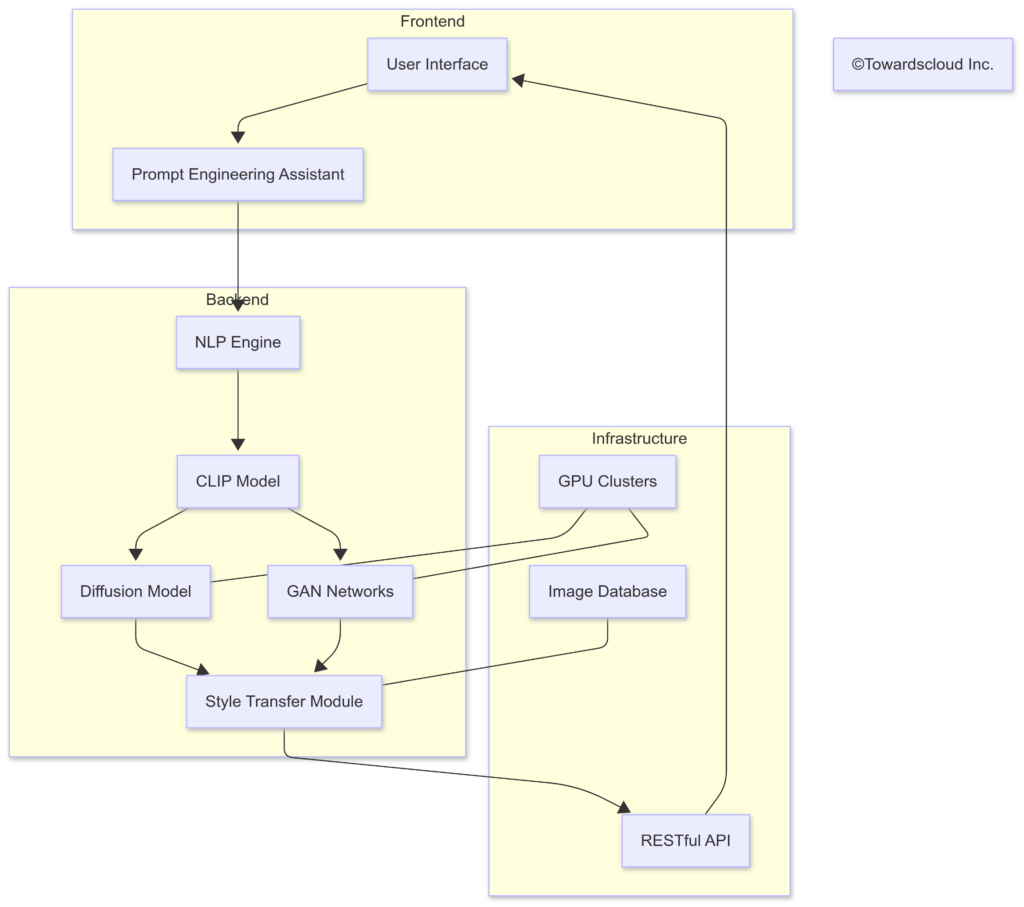
Cloud Infrastructure Comparison
AI art generation systems leverage cloud resources for their compute-intensive operations. Here’s how the major cloud providers support this type of application:
| Feature | AWS | GCP | Azure |
|---|---|---|---|
| GPU Options | NVIDIA A100, V100, T4 via EC2 P4, P3, G4 instances | NVIDIA A100, V100, T4 via A2, N1 VMs | NVIDIA A100, V100, T4 via NC, ND, NV series |
| AI Framework Support | SageMaker with PyTorch, TensorFlow | Vertex AI with PyTorch, TensorFlow | Azure Machine Learning with PyTorch, TensorFlow |
| Serverless Options | Lambda with container support (limited memory) | Cloud Run (better for larger models) | Azure Functions with container support |
| Storage for Training Data | S3, EFS | Cloud Storage, Filestore | Blob Storage, Azure Files |
| Cost Optimization | Spot Instances (up to 90% savings) | Preemptible VMs (up to 80% savings) | Spot VMs (up to 90% savings) |
🚀 Call to Action: Which cloud provider are you most familiar with? Consider how you might deploy an AI art system using their services based on the comparison above.
Real-World Example: Digital Marketing Campaign
To understand the practical value of AI art generation, let’s consider how a marketing team might use such a system:
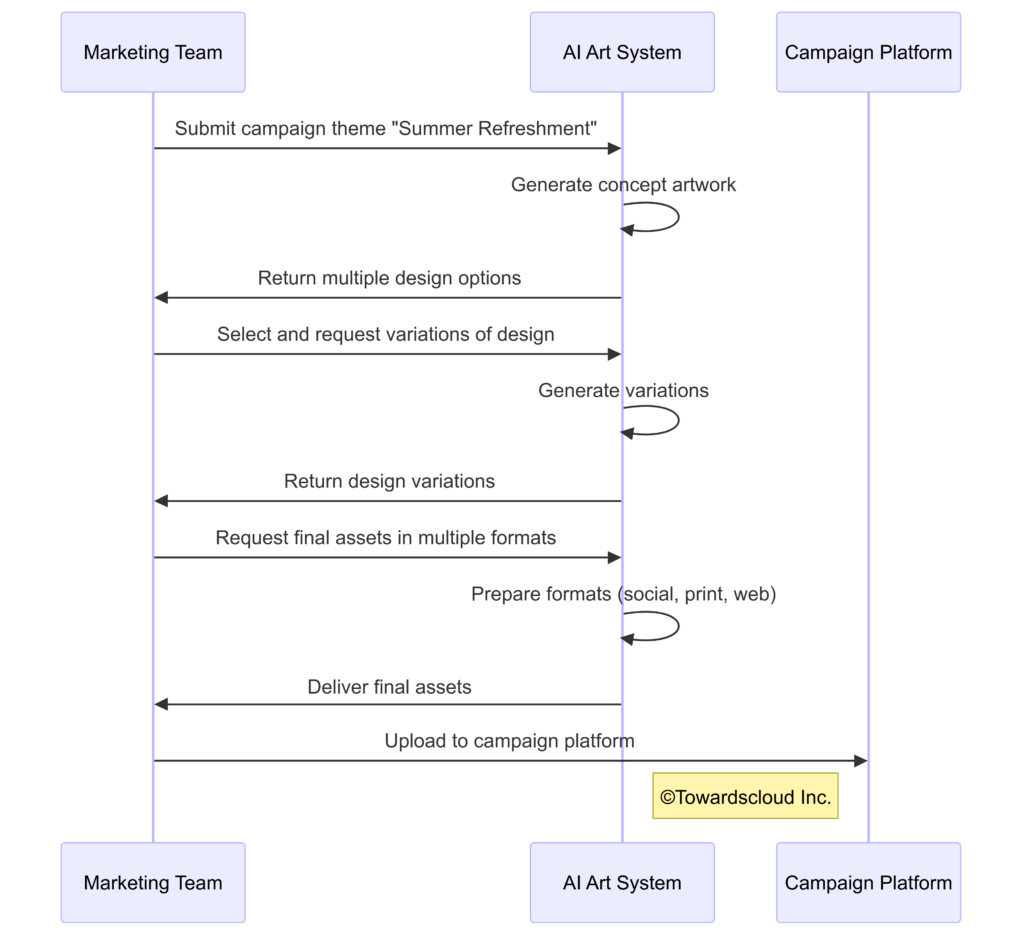
In this scenario, the marketing team saves countless hours of design iterations and gains access to a wider range of creative possibilities than might have been feasible with traditional design processes.
Challenges and Considerations
Despite its impressive capabilities, AI-generated art presents several technical and ethical challenges:
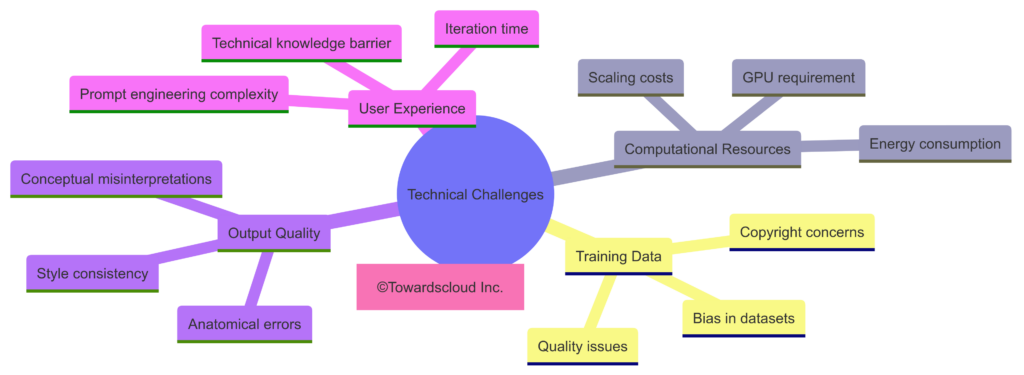
Ethical Considerations
The rise of AI art systems raises important questions about originality, copyright, and the future of human artists:
- Copyright and Ownership: Who owns AI-generated artwork? The user, the AI developer, or is it public domain?
- Artist Displacement: Will AI art tools replace human artists or serve as collaborative tools?
- Dataset Ethics: Many AI systems are trained on existing artwork without explicit artist consent
- Authenticity: Does AI-generated art deserve the same cultural value as human-created art?
⚖️ Call to Action: Consider your own stance on AI art. Do you view it as a legitimate art form or merely a technical output? Your perspective shapes how you might use or develop such technologies.
Implementation Steps: Building Your Own AI Art System
For those interested in implementing a similar system, here’s a example simplified roadmap:

Cloud Deployment Comparison
The choice of cloud provider significantly impacts your implementation approach:
| Deployment Aspect | AWS | GCP | Azure |
|---|---|---|---|
| Container Orchestration | EKS, ECS | GKE | AKS |
| Inference Optimization | AWS Inferentia, SageMaker Neo | Edge TPU, TensorFlow RT | Azure Percept, ONNX Runtime |
| Monitoring Solutions | CloudWatch | Cloud Monitoring | Azure Monitor |
| CI/CD Integration | CodePipeline, CodeBuild | Cloud Build | Azure DevOps |
| Model Registry | SageMaker Model Registry | Vertex AI Model Registry | Azure ML Model Registry |
| Cost for typical setup* | $2,000-5,000/month | $1,800-4,500/month | $2,200-5,500/month |
*Estimated cost for a production system with moderate usage (costs vary significantly based on scale and optimization)
💰 Call to Action: Use the AWS Pricing Calculator, GCP Pricing Calculator, or Azure Pricing Calculator to estimate costs for your specific implementation requirements.
Business Impact and ROI
Organizations implementing AI art generation systems typically see returns in several areas:
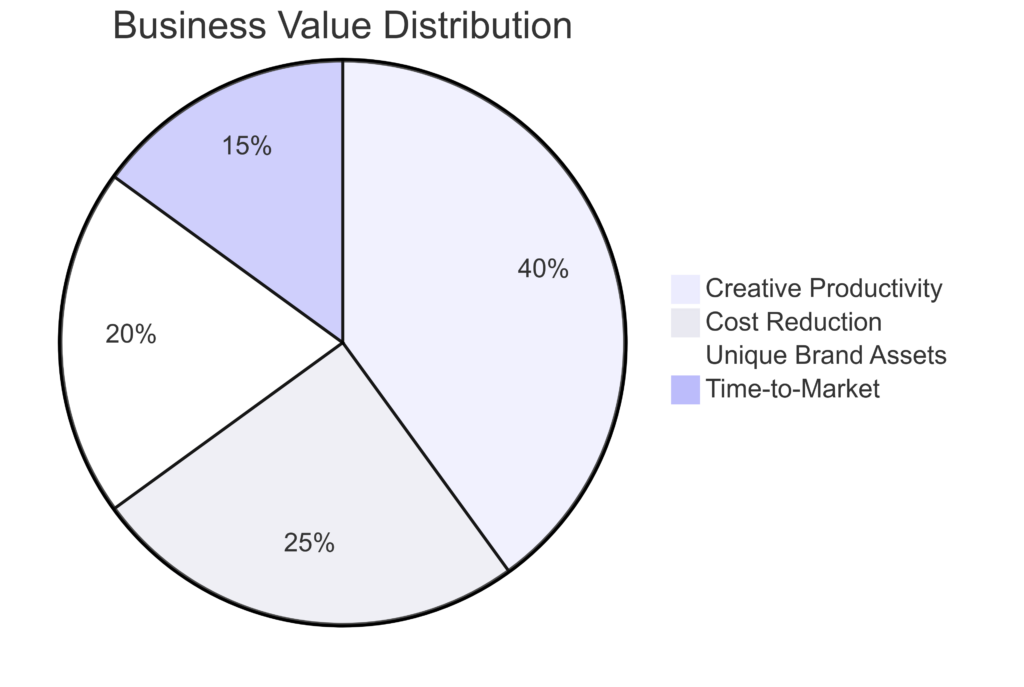
Case studies have shown that creative teams augmented with AI art tools can:
- Produce 3-5x more design concepts
- Reduce design iteration cycles by 60%
- Decrease production costs by 30-50%
- Respond to market trends with greater agility
Future Directions
The field of AI-generated art continues to evolve rapidly. Some emerging trends include:
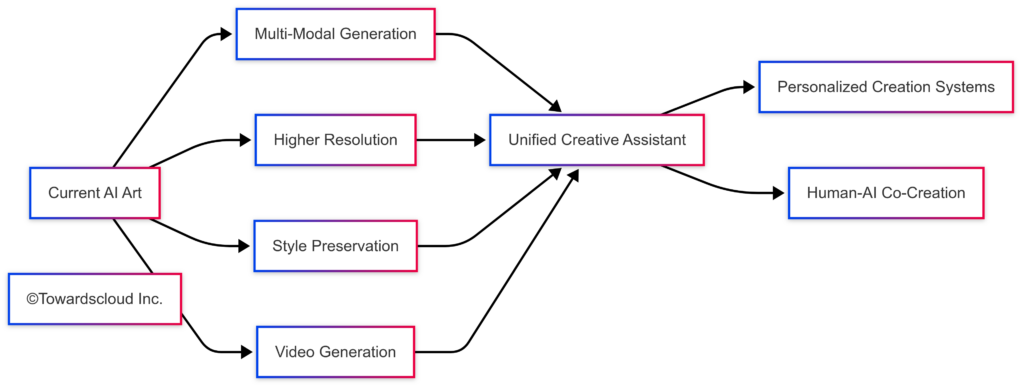
Conclusion
This hypothetical implementation in the creative arts domain represents the current state of AI-generated artwork – powerful, accessible, and transformative. As cloud infrastructure continues to evolve, we can expect these systems to become more capable, efficient, and integrated into creative workflows.
Whether you’re a creative professional looking to enhance your capabilities, a technology enthusiast exploring new frontiers, or a business leader seeking innovative solutions, AI art generation offers compelling opportunities worth exploring.
🖋️ Final Call to Action: Share your thoughts on AI-generated art in the comments below. Have you experimented with any AI art tools? What was your experience like? Your insights contribute to our collective understanding of this emerging field!
Further Resources
- AI Art: A Comprehensive Guide – Academic overview of the field
- Stable Diffusion Documentation – Popular open-source image generation model
- DALL-E Research Paper – Pioneering work in text-to-image generation
- Ethical Guidelines for AI Art – Community-developed ethical framework
Did you find this case study helpful? Follow Towardscloud.com for more in-depth explorations of cloud and AI technologies!